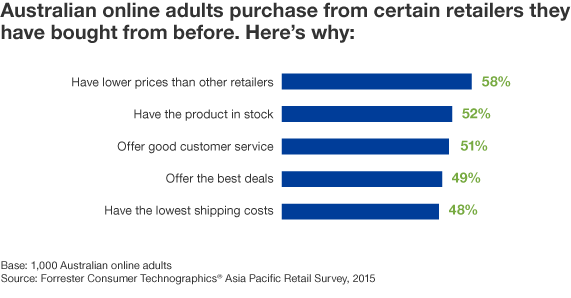The Data Digest: Upping The Emotional Ante Down Under
Emotions are at the basis of how customers perceive experiences – and why they choose to stay loyal to certain brands. But, not all emotions are equal: Different emotions lead to unique behavioral outcomes depending on context, emotional intensity, and even industry.
For example, in our latest study, my colleague Tom McCann and I measured the emotional impact of CX among banks and retailers in Australia. We discovered that feeling valued is one of the most powerful emotions driving loyalty toward a bank: Australian customers who feel that their bank puts them first are willing to pay a premium for the bank’s experience and are more forgiving when something goes wrong. However, among retail customers, valued is good – but happy is better. Australian retailers that leave customers in a cheery mood are more likely to retain their shoppers and turn their customers into advocates.
And what makes Australian shoppers happy? Forrester’s Consumer Technographics® survey data shows that details in the experience go a long way. For instance, customers are pleased with perceptibly low prices or special deals, stocked inventory, and pleasant customer service reps.

The Good Guys, for example, uses in-store perks to spark happiness and impart a feeling of gratitude. The Good Guys allows shoppers to tour model kitchens as seen on episodes of the TV show The Block and ends the experience by giving customers small gifts to inspire creativity as they redesign their own kitchens. Although this is a relatively small gesture, customers who receive these gifts are happily surprised and express their delight across social channels.
It’s clear that while emotions are complex, avoiding emotions is not an option for business leaders in Australia. CX pros must understand which emotions drive behaviors that will help their businesses grow, design experiences to evoke specific emotional reactions, and blend empathy and data to bring emotions into the boardroom. As Tom notes in our recent report, to do this, CX pros need to: “first, create opportunities for execs to empathize with customers. Then, back up emotion metrics with data. Finally, start small and deliver big by using pilot programs to effectively control processes, reduce measurement complexity, and limit variables that might obfuscate the real impact of change.”
Our data proves that Down Under, it pays to be nice.
